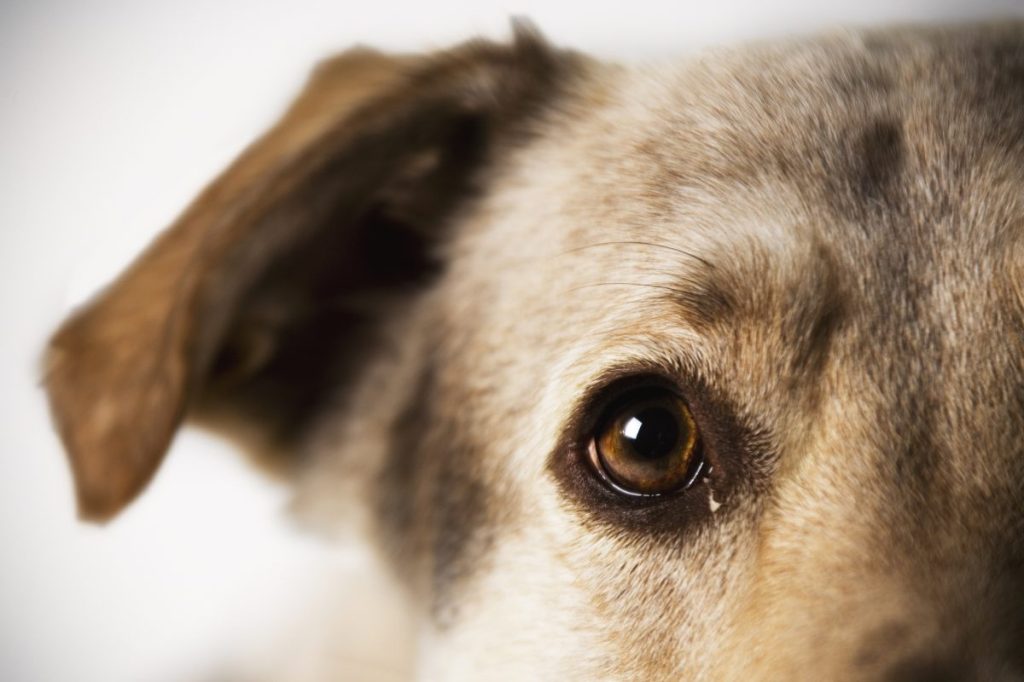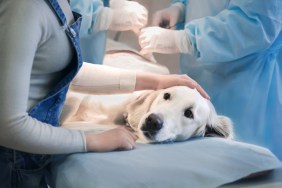Cataracts are the most common vision problem among dogs, but contrary to popular belief, it doesn’t affect only senior dogs. In fact, genetics is a much larger factor than geriatrics.
The word “cataract” means “to break down” in Latin, and that’s exactly what happens: the fibers in the lens of your dog’s eye — made up mostly of water and protein — break down and cause the lens to become more and more opaque, eventually causing blindness. It’s relatively painless, and most often can be treated and even cured through surgery.
Causes
Certain breeds have a tendency to develop cataracts, particularly at young ages. So, if your dog belongs to — or is a mix of — any of the following breeds, you’ll want to watch for symptoms:
- Afghan Hounds
- Cocker Spaniels
- German Shepherds
- Golden Retrievers
- Siberian Huskies
- Labrador Retrievers
- Old English Sheepdogs
- Poodles
- Schnauzers
- English Springer Spaniels
Most cataracts fall into one of these three groups:
- Developmental (early onset): This type is usually inherited, and as the name implies, develops early in life, often in the first year.
- Congenital (juvenile): The dog is born with cataracts. Typically cataracts will develop in both eyes but may grow at different rates. Congenital cataracts can be inherited, but can also be caused by an infection or exposure to a toxin in utero.
- Senile (late onset): Yes, cataracts do develop in dogs over 6 years of age, but this is not as common as in older humans. Usually, senile cataracts don’t develop at a uniform rate and one eye may be more affected than the other. They almost always start at the center of the eye and develop outward, eventually creating an opacity that covers the entire eye.
Cataracts can also develop after an injury or puncture by something like a claw or thorn. These sorts of cataracts can cause the same vision impairment and are treated in the same way: surgery.
When it’s time to see a vet
If you observe a milkiness or “crushed ice” look in your dog’s pupils — even in one pupil — or it seems like your dog doesn’t see as well as they used to, see your vet immediately.
In fact, it’s a good idea to see your vet if your dog’s vision seems to be going, even if you can’t detect any obvious change in the eye. Vision problems aren’t very common in dogs (outside of cataracts), and could indicate a serious issue.
What’s next
At the moment, you have very limited choices: your dog has to live with reduced vision or you have to invest in cataract surgery.
During surgery, a canine ophthalmologist will remove the damaged lens and insert a fresh replacement. Yes, it’s expensive. Often, the tab can exceed $2,000. The procedure also carries some risks. Some dogs suffer post-surgical scarring that can limit vision. As many as 30 percent of dogs eventually develop glaucoma (an increase in pressure in the eye), which may mean additional surgery.
Still, for 90 to 95 percent of dogs, the surgery results in vision that’s close to normal, and for that reason, many owners think it’s worth it.
What to expect post-surgery
The surgery takes about an hour per eye and requires general anesthesia. In most cases, an overnight stay isn’t usually necessary.
Recovery takes about six weeks. Your dog may have to wear an Elizabethan collar (the kind that looks like a plastic lampshade) to prevent rubbing and scratching during the healing process. And you’ll probably have to administer eye drops during the recovery period to prevent infection.



